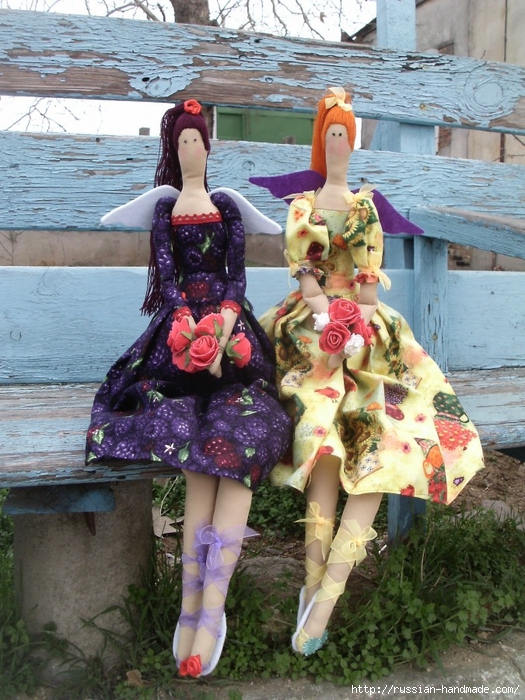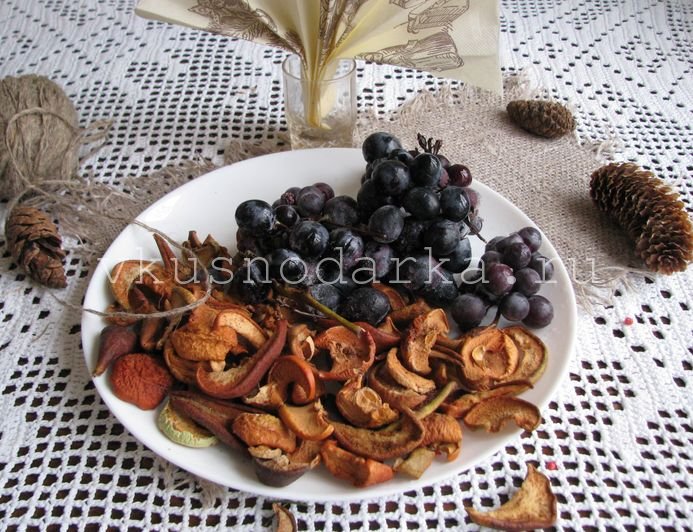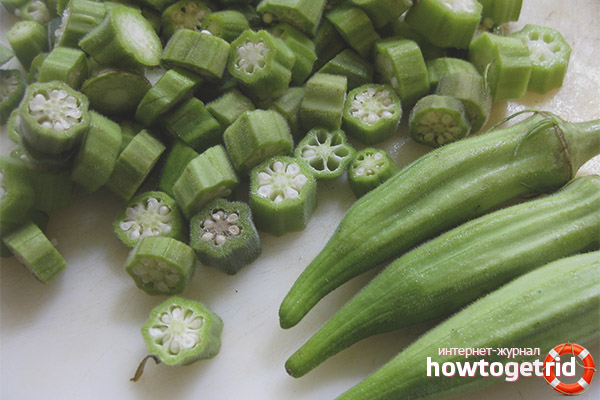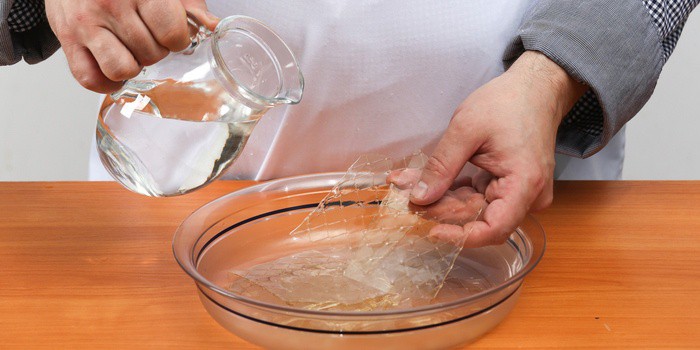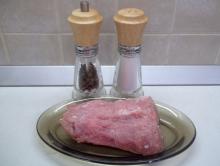Methods of dyeing fabric in flesh colors for sewing tildes. Tilda doll: how to dye a fabric at home
For the tilde body, they use either a special original fabric for the dolls body, or light natural fabric (linen, calico, cotton), which can be tinted independently.
All tilda-style toys have a distinctive Mediterranean tan. So, the body should not be sewn from white fabric. To add flesh-colored fabrics, natural dyes are used - strong tea and coffee brewing, onion husks, wine, juices. Can be stained with aniline dyes and even iodine. But do not be zealous, you cannot "age" the tilde (unlike attic dolls and primitives).
It is better to take white calico or satin as the basis. Chintz is too thin, linen and poplin are slightly harsh. In addition, flax is not too evenly painted. Before painting, new coarse calico needs to be washed to wash off factory impregnation.
Here some fabric dyeing recipes at home.
1. Recipe for tea solution: brew strong black tea and immerse the fabric in hot solution for 15-20 minutes. You can add a little ordinary baking soda to the tea leaves for the fortress. Stir the fabric periodically for a uniform tone. Then squeeze the fabric slightly, straighten and dry. It is better to dry not on a rope, but on a table - the color will turn out more uniform.
The final color after coloring with black tea does not appear immediately, but after a couple of days.
2. Recipe for coffee solution: 50 g of the cheapest instant coffee (get a stronger color), 1 tablespoon of salt per 1 liter of water. Dip the fabric into the solution and stir constantly for uniform coloring for 15-20 minutes. Rinse in cold water, squeeze, dry in a straightened form, without bending (so that there are no colored creases on the fabric).
You can use natural coffee brewed in accordance with all the rules in a Turk. Staining occurs according to the principle of staining in tea solution. The fabric retains a slight smell of coffee. Try this coloring method, and your tilde will be not only beautiful, but also fragrant.
3. Acrylic paints for batik or for fabric. Such paints are sold in stationery stores, shops for creativity or in specialized salons "Everything for the artist."
For coloring you need brown, red, orange and white. The main tone is brown, we add other colors to it. The amount of paint is selected exclusively experimentally. On average, we take 5 ml of brown and 1 ml of red and orange paint per 0.5–0.8 liters of water. Possible options.
If the color is too bright and dark, then you need to lighten the color solution with white paint (not water).
Hold the fabric in the prepared dye for 10 minutes, stirring occasionally. Rinse thoroughly in cold water and dry straightened on a flat surface.
4. Black tea with acrylic paints for batik. The fabric already stained with tea is tinted with red and orange acrylic paints (according to method No. 3). White tone is added to brighten. It turns out a flesh-tanned color of the fabric - ideal for the tilde body.
Tea staining is the most common way of staining at home, as tea is always at hand and easier to work with.
Some needlewomen first sew a toy, and then paint it. In this case, the tea solution is made thicker - about 5 teaspoons per half a glass of water, adding a little PVA glue to fix it. All further procedures are similar to the first method. But there is a difficulty in squeezing the water from the toy and its further drying. It should also be noted that all sewn parts (eyes, jewelry, pendants) are attached after painting the toy.
Tips:
- always experiment on a separate piece of fabric before staining the entire canvas;
- natural fabrics saturate faster with color than synthetic fabrics
- after dyeing, you can use special factory color fixers for fabrics so that the color does not fade over time;
- experiment with different brands of tea, because they give different shades and density of color under the same conditions of infusion.
Today, the Tilda doll is becoming more and more popular, which can be used not only for playing, but also for decorating the interior. And if you make a house in such a way, then it will become an excellent talisman of your house, able to protect it from everything bad. In addition, in the process of creativity, you can relax your soul and tune in to positive.
Do not forget that you can give your own made Tilda to your good friends, and believe me - this will be a great present. And do not think that a tilde can only be in the form of men. Not at all! You can give it the shape of all kinds of animals. The main thing in its creation is fantasy! And the colors can be original, if you decide to dye the fabric at home using natural dyes.
Features of the manufacture of Tilda dolls
As for the history of the appearance of these amazing dolls, then, most likely, our grandmothers created something similar even in childhood. But only in 1999, the Tild production was put on stream and they began to be used for decorating the room. When buying such a doll for decoration purposes, you can purchase a Tilda full of fragrant herbs that can fill your home with pleasant aromas.
When making such a doll, keep in mind that this work requires painstaking work. You must carefully stitch even the smallest details. Do not forget that thin arms and legs also need to be filled with padding polyester, and then carefully sewed. Pay attention to the seam, which traditionally runs in the center of the face. Try to make the halves of the head equal, otherwise the face will look asymmetrical.
If we talk about clothes, then it is usually sewn to the body.
This must be done very carefully so that the seams are not visible to the prying eye. If you want your doll to sit, then it is worth making several stitches under the knee. In this case, the doll’s pose will not look tense.
As for the seams, all parts of Tilda must be sewn together with a blind seam so that it looks whole. And as we already said, so that Tilda not only decorates your interior, but aromatizes it, you can put special sachets with aromatic herbs in the middle. Moreover, finely ground cinnamon or vanillin can be added to the packing.
You can fill Tilda with sea salt. But before you mix it with a filler, it is worth flavoring it. To do this, you can simply add a few drops of essential oil to the salt.

Another flavoring option is to add a small amount of chopped mint, lemon balm and other aromatic herbs to sea salt.
One of the features of the manufacture of these pupae is the light brown color of the parts.
Unfortunately, it is with him that most often difficulties arise, because choosing the right shade is rather difficult. And so today we will talk about how to dye the fabric in the right shade at home.
This can be done by adding the following ingredients to the water:
- Coffee,
- Zelenki.
And now we will consider the coloring technology using the presented ingredients.
How to dye fabric with tea
There is nothing complicated in the way of painting with tea. First of all, in this case, you need to weld a special solution. To do this, you need an enameled saucepan, a few tablespoons of brewed black tea and cold water.
We make the solution as follows:
- Pour cold water into the pan. Pour a few tablespoons of tea there. Attention! The amount of tea will directly depend on what color you want to get in the end.
- We put water with tea on fire and bring to a boil. At the same time, make sure that too much water does not boil away, because in this case you will not have anything to dye the fabric.

After the solution is ready, filter it through a two- or three-layer gauze. Add a little salt to the resulting liquid. This is done so that natural dyes are more strongly absorbed and practically not washed out.
To paint our future Tilda, you need to do this: just dip the fabric in water and boil in the solution for an hour and a half.
Attention! In the process of boiling, do not forget to periodically stir the fabric so that it does not become stained with stains. And one more thing: never dry the fabric in an upright position, since spots will definitely form at the place where the fabric comes into contact with the rope or clothespins.
How to dye a fabric with coffee
Before you start dyeing fabric for Tilda in this way, keep in mind that the doll after this procedure is likely to smell like coffee. You can give your Tilda the color of a light tan by preparing a solution of coffee, which should be applied to the fabric with an ordinary brush.
The solution in this case should be prepared as follows:

- In half a glass of water, dissolve from three to five tablespoons of ground coffee. Attention! Coffee should be natural, not soluble, because otherwise it would be virtually impossible to predict the color of the fabric. By the way, if you wish, you can add half a teaspoon of vanillin to this solution to give the fabric an even more refined and multifaceted aroma. Also pay attention to the fact that the solution must be thoroughly filtered before use, as dark brown spots or stains may appear from coffee lumps on the fabric.
- In order for the fabric to dye evenly, be sure to wash it thoroughly before dyeing with laundry soap.
- Before dyeing the fabric, it is better to fully form all parts of Tilda's body. If the color is too saturated, then you can simply squeeze the part with a damp cloth or gauze. And then all the excess color will remain on it. And one more nuance: when drying, try to make sure that the fabric does not come into contact with other surfaces, since in places of contact the color will be less saturated.
How to dye a fabric with green paint

If you need to paint some details of your Tilda’s outfit in emerald color, then you can use the green brush for this.
Good day to all! Today we will talk about the Tilda doll.
We all saw photos on the Internet, but few people know that it smells very tasty ...
The fabric for this is dyed and aromatized. (of course, not all and not always, but how nice it is to hug and hug such a cozy doll that smells of coffee, cinnamon or vanilla ...)
And so that our weekend does not pass without a trace, let's sew Tilda?
This master class, I found on the Internet. (here it is described in detail and shown how to dye fabric for Tilda)
Well, in the next topic there will be a master class on tailoring this miracle doll.
And here he is)
So, there are 2 ways to dye a fabric for a doll:
1) Coffee solution with a brush.
2) Boil the fabric in a coffee solution.
Method One: Dyeing the fabric with a brush is easier and faster. First, the fabric must be washed with soap, otherwise the fabric may unevenly stain.
Then you need half a glass of water and 3-5 teaspoons of instant coffee - depending on the desired color intensity (the more coffee, the darker the fabric). You can also add a pack of vanillin to the coffee solution - also for a pleasant smell. It is better to strain the resulting solution through a sieve so that there are no coffee lumps in it, since dark spots will remain on the fabric from them. 
It is better to paint finished parts filled with filler. At first it is better to wet and squeeze them, and then to paint, since with the gradual wetting at the joints of dry and wet places black bands form, which are then difficult to smooth. If the color is too dark, the item can be squeezed out in a towel or cloth and excess coffee solution will be absorbed into it. 
When drying parts, it is better to ensure the least contact with other surfaces, as in these places the painting will be a little less. Non-stuffed parts (for example, rabbit ears) can be hung on clothespins by the edges, which will be tucked inward, since in places of contact with clothespins the color will also differ from the general color of the fabric. 
The disadvantage of this method: for all its simplicity, the color is stained only superficially, so if water, even a drop, gets on the fabric, spots and stains will remain.
Second way. It is more reliable to brew fabric in a coffee solution, since the color remains for a long time and the water of such a fabric is not at all scary - there are no spots. However, when washing with the product, the color may become less intense. First, prepare a coffee solution - depending on the amount of fabric we take the appropriate dishes. Add instant coffee to make the color black; you can add vanillin. 
It is better to cook the cloth in small pieces - maximum 70x70 cm - it’s more convenient to mix and the cloth in the pan is distributed better. Before lowering into the coffee solution, the fabric must be wetted to immediately avoid stains. That is, we wet the fabric, wring it and lower it into the solution. Cook for 30 minutes, stirring often. 
Then add 2 tbsp to the water basin. tablespoons of vinegar - here it serves as a fixative. We take out the fabric from the coffee solution, lower it into a basin of water 1-2 times (do not rinse!). In the photo - the upper piece of tissue was lowered into the basin 1 time, the next - 2 times, the bottom - the original tissue. Next we hang to dry, without squeezing. The fabric should hang tight, without sagging. 
Remove the fabric a little damp and iron it to smooth all the folds and fix the color. We start to iron on one side and iron to the end, without turning over. Then only on the other side. When ironing on the front side, all the pigments seem to stretch to the other side, so the front part is more textured than the wrong side. You need to iron without steam, since the fabric is damp and the iron will so hiss. 
As a result, we get a fabric of a natural, slightly tanned color with the aromatic smell of coffee, and now we can sew our Tilda doll. It is simply impossible to tear yourself away from a soft toy with such a wonderful smell! 






An important issue for all Tilda seamstresses, where to get the fabric for the body? On the shelves of shops there are few fabrics of the right colors, because it is customary to sew Tilda in beige or mustard color, and what then? Very simple. Craftswomen came up with a convenient way out of this difficult situation, they began to dye the fabric. It can be painted in various ways and by various means. Today I will show a small instant fabric dyeing workshop, as well as tell you what you need to pay attention to avoid mistakes.
Which fabric to choose is up to you, it can be calico, cotton or linen, you choose the fabric depending on which doll you will sew. For painting, I bought a white calico. The photo above shows how it was stained with instant coffee, I liked the color, but in my opinion it was necessary to add a little more coffee, then the color would be even darker, another time I will take this fact into account.
And so, to begin with, a piece of fabric needs to be washed or soaked for 20-30 minutes, so that the fibers become loose and better absorb the paint.

While the fabric is soaked, you need to prepare a solution in which we will dye the fabric. To do this, you need salt and coffee.

You can buy coffee not expensive, I took a small can of 50 g. You need to boil water, pour a tablespoon of salt and 30-40 g of coffee, just do not pour coffee into boiling water, first screw the fire on the stove, otherwise the coffee will climb over the edge.

There should be enough water in the pan to cover the entire fabric. You need to cook it for 10-15 minutes over low heat, stirring constantly, so that the fabric is evenly dyed. After staining, rinse the fabric under cold water, and then smooth it well. You need to hang the fabric to dry in a tightened form, because if the fabric is not evenly dried or folded, smudges will remain. The big disadvantage of this painting is that any splash of water on the fabric stains, so dolls can not be washed. When the fabric dries it needs to be ironed thoroughly, I stroked it with a steamer, the fabric was a little damp and there were no stains except one place, which is also important to remember, when ironing the fabric, do not iron along the edge of the ironing board, I got a stain on the silhouette of the ironing boards, which means you need to iron only in the middle without going beyond the edges. If your iron leaks and a few drops fall on the fabric, a divorce cannot be avoided, be careful. But when working with fabric, there are no problems, do not be afraid to pick it up, it will not color them, but it will become a wonderful decoration for your doll.
An easy way to try dyeing the fabric at home is to take an ingredient such as coffee, which you probably already have at home. To stain the fabric with coffee, you will need only a few simple items, which most likely are also in your kitchen cabinet. It is best to use natural fabrics such as cotton, wool or linen. The whole process of dyeing is quite fast and relatively accurate, while it allows you to change the appearance of almost any fabric as you see fit.
Steps
Dyeing the fabric with coffee
- As an alternative to brewing several servings of grain coffee at home, you can use instant coffee or purchase ready-made coffee at a nearby cafe or coffee shop. However, the latter option will cost you significantly more.
-
Fill the pan with water. Put it on the stove and turn on a strong fire or heat.
- The size of the pan will depend on how much fabric you are going to dye. The usual rule is that the entire fabric can be completely immersed in water.
-
Add brewed coffee to the pan. When you are finished brewing coffee, pour it into a pot of water.
Bring the composition to a boil. After you add all the prepared coffee to the pan, bring the coffee solution to a boil. Turn off the burner as soon as the composition boils well.
Immerse the cloth in the pan. When you turn off the hotplate and the coffee stops boiling, completely immerse the cloth in it. Gently stir the damp cloth in the pan to release any air pockets from it.
- Since the coffee solution has just stopped boiling, it is probably best to use a wooden spoon so as not to burn yourself and spoil other kitchen utensils.
-
Leave the fabric to soak in the coffee solution. The longer the fabric will be in it, the richer the resulting color. It will take you about an hour to get a noticeable stable staining result, but you can leave the fabric in solution for a longer time to get an even deeper shade.
Remove the cloth from the pan and rinse. Remove the fabric from the coffee composition and carefully place it in cold water. Do this until clear water flows, which will indicate the removal of all excess coloring matter.
Rinse the pan. When finished dyeing the fabric, rinse the pan. Coffee can lead to discoloration of the pan if it is not drained promptly after the staining procedure and the dishes are not washed.
Wash the cloth with a mild detergent and dry. Set the washing machine to delicately wash in cold water and add gentle detergent to it. After washing, the fabric can be dried in a dryer with a little heat or just hung to dry in the shade.
- The above method of staining with coffee will not give you a completely stable result, since coffee is a natural dye, the color of which is gradually washed out with each wash.
Rubbing coffee grounds
-
Wash the fabric first. Wash the fabric before dyeing, but do not dry it. This will remove grease and other contaminants that may interfere with uniform staining of coffee grounds.
-
Make coffee. You will need thickened from brewed coffee beans. To get coffee grounds, you can use a French press or a coffee maker.
- You will need a large enough amount of coffee grounds to cover with it the entire area of \u200b\u200bthe fabric to be dyed. Probably, for this it will be necessary to brew coffee several times.
- Take dark roast coffee to darken the fabric, or use a lighter roast if you don't want to make the fabric very dark.
- This is a great way to use coffee grounds. If you regularly drink coffee beans, then for this method of staining, you can gradually accumulate the required amount of grounds.
-
Make coffee grounds pasta. When the coffee grounds have cooled, place them in a large bowl and then add water there. You will need approximately one tablespoon of water for each glass of coffee grounds.
- Mix coffee grounds with water with a wooden spoon to moisten the composition evenly. Ground coffee is not so small, so it will be enough to prevent the paste from only 7-8 times.
-
Apply coffee grounds paste to the fabric. Lay the fabric to dry on a waterproof surface. Be sure to completely cover the coffee grounds material and rub it. This can be done with a wooden spoon or similar kitchen utensils or you can simply rub coffee paste with your hands.
- The whole process is not very neat, so it’s better to do it where it’s not scary to create some kind of mess, for example, in a garage. You can also simply protect the floor or carpet with a thick layer of newspaper.
-
Dry the cloth. Hang the fabric to dry in a shaded area. You need to wait until it is completely dry. This can take from several hours to whole days. You can also dry the fabric in a dryer with low heat for 30 minutes.
Remove coffee grounds from the fabric. You can do this with your hands, use a brush with natural bristles, or simply shake the cloth to remove all the grains of coffee grounds. If the fabric is not dark enough, repeat the procedure until the desired effect is achieved.
Iron the fabric if desired. An iron will smooth out the crumpled fabric.
- For best results, the fabric should be completely dry when you iron it with a hot iron.
Tai Dye Staining
-
Wash the fabric first. Before dyeing the fabric using the Tai Dai technique, wash the fabric in the usual way. This will remove fatty and other contaminants that may interfere with the uniform absorption of the dye composition into the fabric.
- The fabric can be washed with other clothes or individually (depending on your own preferences).
- Be sure to follow the instructions for washing the fabric (if any).
-
Make coffee. The amount of coffee you need to brew will depend on how dark you want the fabric to be. Stronger coffee allows you to get a darker coffee shade.
- If you need to dye the fabric a very dark coffee color, take more coffee or use dark (strong) roast coffee. If you need a light coffee shade, take less coffee or use light or medium roasted coffee.
- As an alternative to brewing several servings of grain coffee at home, you can use instant coffee or purchase ready-made coffee at a nearby cafe or coffee shop.
-
Wait for the coffee to cool. It can be refrigerated for 20 minutes or just wait a couple of hours, leaving coffee at room temperature.
- Then place your finger in the center of the fabric (or things) and start turning it clockwise with your hand. Depending on the size of the fabric, you may need a plastic container or a bag with a zip fastener. Close the bag or container and put it somewhere in a warm place for 24 hours.
- Coffee allows you to achieve a light fabric from light to medium-dark brown. If you want to get a warmer reddish tint, you can use the same methods, but replace coffee with tea.
- Pre-check the staining result on a test tissue sample. This will allow you to evaluate the likely staining effect without the risk of accidentally spoiling your entire fabric.
Warnings
- Staining coffee grounds is a rather dirty process, so be sure to ensure that you are able to reliably protect the floor or carpet on which you will work.
- Staining coffee grounds can cause scuffs on the fabric, so avoid this method if you want to keep the fabric intact.
Wash and dry the fabric in the usual way before dyeing the fabric. This will eliminate fatty and other contaminants that may interfere with the uniform absorption of dyes into the material.
Make coffee. The amount of coffee you need to brew will depend on how dark you want the fabric to be. The stronger the coffee, the darker the shade.

